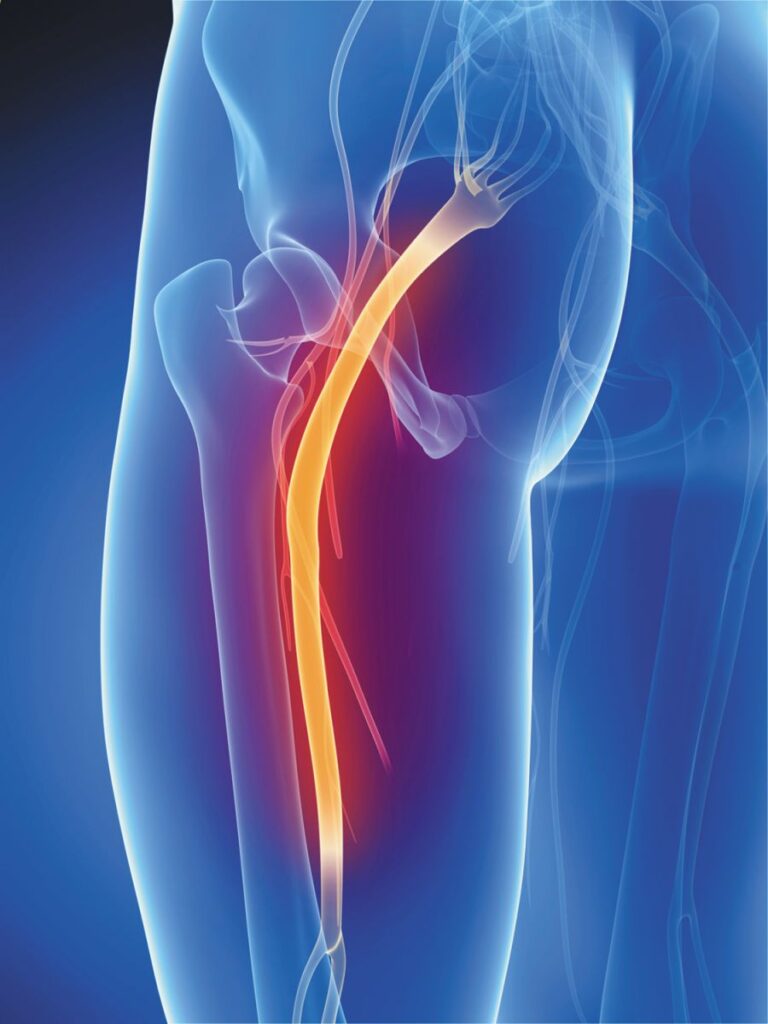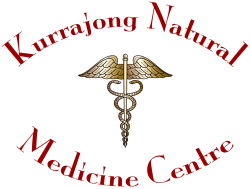Sciatica - A Chinese Medicine Perspective
What is Sciatica?
Lower back pain is one of the most frequently reported complaints; it affects quality of life and reduces social and economic efficacy [1]. Sciatica is a symptom rather than a specific diagnosis. Available evidence from basic science and clinical research indicates that both inflammation and compression of the sciatic nerve are important in order for the nerve root to be symptomatic [2].
Typically, sciatic pain radiates from the lower (lumbar) spine to the buttock and down the back. People might feel the discomfort almost anywhere along the nerve pathway, but it’s especially likely to follow a path from the low back to the buttock and the back of the thigh and calf [3]. It may however also radiate to the inguinal region.
The pain can vary widely, from a mild ache to a sharp, burning sensation or excruciating pain. Sometimes it can feel like a jolt or electric shock. It can be worse when you cough or sneeze, and prolonged sitting can aggravate symptoms. Usually only one side of your body is affected [3].
Some people also have numbness, tingling or muscle weakness in the affected leg or foot. You might have pain in one part of your leg and numbness in another part [3].
It is estimated that at least 50% of people in Western industrialized countries will suffer from back pain at some time of their life [4].
Conventional treatment utilises pharmaceutical approaches such as Anti-inflammatories, Muscle relaxants, Narcotics, Tricyclic antidepressants, Anti-seizure medications and/or Corticosteroids.

How Does Traditional Chinese Medicine (TCM) view Sciatica
In Chinese medicine, lower back pain and sciatica are discusses together as they share common causes such as: Excessive physical work; Excessive sexual activity; Pregnancy and childbirth; Invasion of external cold and dampness; Inadequate exercise [4].
As with the causes of sciatica and lower back ache, TCM pathologies are very similar and include:
- Retention of Cold Dampness
- Stagnation of Qi and Blood
- Unaffected by the application of heat
- Kidney deficiency
- Liver-Qi stagnation
Treatment with acupuncture and/or Chinese herbal medicine is aimed at addressing the organ pathology associated with sciatica [4]. Several research studies have shown acupuncture to be highly effective, safe [4,5,6,7] and in some instances more effective than conventional drug therapy [4,6,7].
Unlike conventional treatment, which essentially considers sciatica as an inflammatory response of the sciatic nerve to compression of one kind or another on the nerve root, Chinese medicine differentiates between the various causes and pathologies which are reflected in the signs and symptoms of the patient.
For example, in the case of Qi and Blood stagnation the pain experienced by the patient is most likely of a sharp, stabbing and possibly severe type, whereas sciatic pain due to Cold-Damp is dull and aching in nature and will usually respond to the application of heat.
At Kurrajong Natural Medicine Centre our highly qualified and experienced team of practitioners are happy to develop a personalised treatment programme with you. Simply call (02)4573 0784
What You Can Do to Help Yourself
You may download the “Self-Help Guide to Reduce Back Pain and Increase Your Enjoyment of Life” by Dr Danny T. Siegenthaler (Traditional Chinese Medicine Practitioner)” HERE
Some self-help strategies that may be of benefit:
-
Rest and gentle movement: Avoid excessive or strenuous activities that exacerbate your symptoms, but also try to avoid prolonged bed rest. Engage in gentle exercises and movements, such as walking or swimming, to promote blood flow and reduce stiffness.
-
Hot and cold therapy: Apply a cold pack to the affected area for 20 minutes several times a day during the initial acute stage to reduce inflammation. After a couple of days, you can switch to using a heating pad or taking warm baths to relax the muscles and promote healing.
-
Proper posture and body mechanics: Pay attention to your posture, especially when sitting or standing for prolonged periods. Use ergonomic chairs or lumbar supports to maintain a neutral spine position. When lifting heavy objects, remember to bend your knees and use your leg muscles instead of your back.
-
Exercise and stretching: Engage in regular low-impact exercises and stretches to strengthen the muscles supporting your spine. Focus on exercises that promote core strength, such as Pilates or yoga. Additionally, specific stretches targeting the hamstrings, piriformis, and lower back may help alleviate sciatic pain.
-
Pain medication and topical treatments: Over-the-counter pain relievers, such as nonsteroidal anti-inflammatory drugs (NSAIDs), can help reduce pain and inflammation. Topical treatments like creams or patches containing capsaicin or menthol may provide temporary relief when applied to the affected area.
-
Weight management: Excess weight can put additional strain on your spine, potentially exacerbating sciatica. Maintaining a healthy weight through a balanced diet and regular exercise can help alleviate symptoms.
-
Stress management and relaxation techniques: Chronic pain can be mentally and emotionally challenging. Engaging in stress management techniques like deep breathing, meditation, or mindfulness exercises may help reduce tension and improve your overall well-being.
Remember, these self-help strategies may provide temporary relief, but they might not address the underlying cause of your sciatica. If your symptoms persist or worsen, it’s essential to seek professional medical advice for a proper diagnosis and treatment plan.
References
1. Ji, M., Wang, X., Chen, M., Shen, Y., Zhang, X., & Yang, J. (2015). The Efficacy of Acupuncture for the Treatment of Sciatica: A Systematic Review and Meta-Analysis. Evidence-based complementary and alternative medicine : eCAM, 2015, 192808. https://doi.org/10.1155/2015/192808
2. Valat, J. P., Genevay, S., Marty, M., Rozenberg, S., & Koes, B. (2010). Sciatica. Best practice & research. Clinical rheumatology, 24(2), 241–252. https://doi.org/10.1016/j.berh.2009.11.005
3. Mayo Clinic. URL: https://www.mayoclinic.org/diseases-conditions/sciatica/symptoms-causes/syc-20377435. Last visited: 8th Aug. 2021
4. Marciocia, G. (1994) The Practice of Chinese Medicine: The Treatment of Disease with Acupuncture and Chinese Herbs, Edinburgh: Elsevier Churchill Livingstone.
5. Haake, M., Müller, H. H., Schade-Brittinger, C., Basler, H. D., Schäfer, H., Maier, C., Endres, H. G., Trampisch, H. J., & Molsberger, A. (2007). German Acupuncture Trials (GERAC) for chronic low back pain: randomized, multicenter, blinded, parallel-group trial with 3 groups. Archives of internal medicine, 167(17), 1892–1898. https://doi.org/10.1001/archinte.167.17.1892
6. Huang, Z., Liu, S., Zhou, J., Yao, Q., & Liu, Z. (2019). Efficacy and Safety of Acupuncture for Chronic Discogenic Sciatica, a Randomized Controlled Sham Acupuncture Trial. Pain medicine (Malden, Mass.), 20(11), 2303–2310. https://doi.org/10.1093/pm/pnz167
7. Qin, Z., Liu, X., Wu, J., Zhai, Y., & Liu, Z. (2015). Effectiveness of Acupuncture for Treating Sciatica: A Systematic Review and Meta-Analysis. Evidence-based complementary and alternative medicine : eCAM, 2015, 425108. https://doi.org/10.1155/2015/425108
Disclaimer
Disclaimer information for users of the Kurrajong Natural Medicine Centre, Namaste Yoga Kurrajong and The Herbal Health Coach website.
Page last updated: 24th June 2023
Information provided for education and research information only
The information on this website is presented by Kurrajong Natural Medicine Centre for the purpose of disseminating health information free of charge for the benefit of the public.
While Kurrajong Natural Medicine Centre has exercised due care in ensuring the accuracy of the material contained on this website, the information on the site is made available on the basis that Kurrajong Natural Medicine Centre is not providing professional advice on a particular matter.
This website is not a substitute for independent professional advice. Nothing contained in this site is intended to be used as medical advice and it is not intended to be used to diagnose, treat, cure or prevent any disease, nor should it be used for therapeutic purposes or as a substitute for your own health professional’s advice.
Kurrajong Natural Medicine Centre does not accept any liability for any injury, loss or damage incurred by use of or reliance on the information provided on this website.
Quality of information
Kurrajong Natural Medicine Centre makes every effort to ensure the quality of the information available on this website and updates the information regularly. Before relying on the information on this site, however, users should carefully evaluate its accuracy, currency, completeness and relevance for their purposes, and should obtain any appropriate professional advice relevant to their particular circumstances. Kurrajong Natural Medicine Centre cannot guarantee and assumes no legal liability or responsibility for the accuracy, currency, completeness or interpretation of the information.
The material may include the views or recommendations of third parties and does not necessarily reflect the views of Kurrajong Natural Medicine Centre or indicate a commitment to a particular course of action.
Links to other websites
This website contains links to other websites which are external to Kurrajong Natural Medicine Centre. Kurrajong Natural Medicine Centre takes reasonable care in selecting linking websites but Kurrajong Natural Medicine Centre accepts no responsibility for material contained in a website that is linked to this site. It is the responsibility of the user to make their own decisions about the accuracy, currency, reliability and correctness of information contained in linked external websites.
Links to external websites are provided for the user’s convenience and do not constitute an endorsement or a recommendation of any third party products or services offered by virtue of any information, material or content linked from or to this site. Users of links provided by this site are responsible for being aware of which organisation is hosting the site they visit.
Views or recommendations provided in linked sites may include the views or recommendations of third parties and do not necessarily reflect those of Kurrajong Natural Medicine Centre or indicate a commitment to a particular course of action. .



